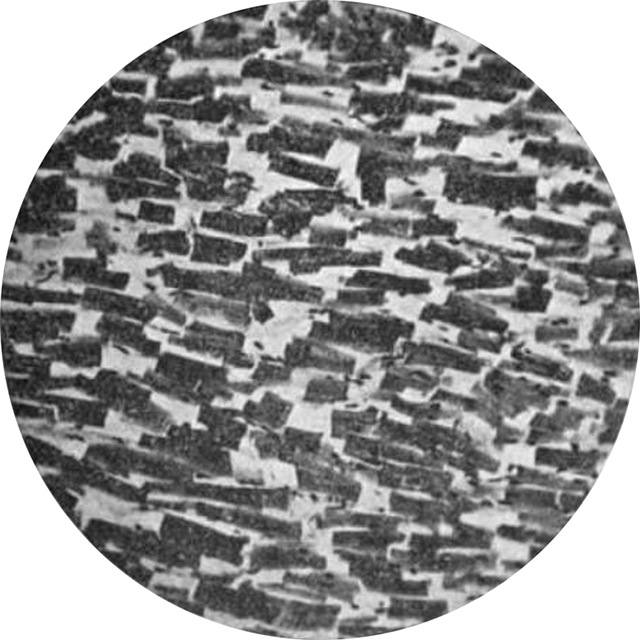of hearts the seat of dissociation, 1

Fig. 3.
Marked general segmentation with great diastasis of the pieces × 120
(round original)
illustrating Ludwig Hektoen (1863-1951 *). 42. “Segmentation and fragmentation of the myocardium,” pp 233-267 in long section “Cardiovascular and Hemapoietic Systems”
in Proceedings of the Pathological Society of Philadelphia 18 (1898)
University of Michigan copy, digitized February 6, 2008
another copy at NIH National Library of Medicine
—
“The ends may be straight, concave, or convex, dentated, or terraced, often finely irregular; lateral processes are present; larger segments, evidently composed of more than one cell, are also found; small square or oblong segments without nuclei, as well as irregular fragments, frequently occur, evidently due to the mechanical fracture of the lateral processes of the loosened segments, but fracture lines very rarely pass near the nucleus (Fig. 3). More or less diastasis of the segments has usually taken place, and the intervening spaces are oftenest apparently empty. Generally the separated pieces maintain a relatively normal position, but sometimes disarrangement has been brought about...“
253
“The naked-eye appearances of hearts the seat of dissociation.”
249
tags:
disarrangement; ekphrasis; ends; fragmentation; lines; segmentation
L. Hektoen, “Cardiovascular and Hemapoietic Systems” (1898)